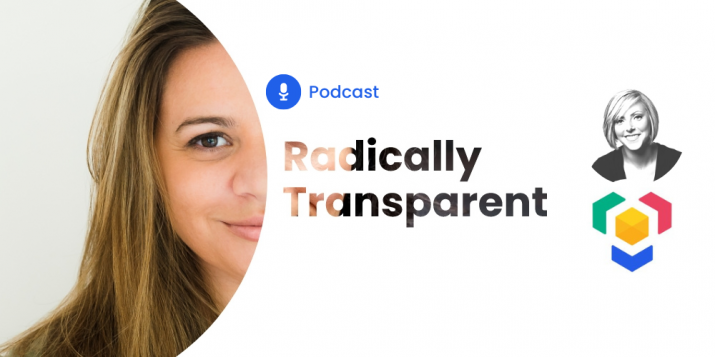
Why LinkedIn should be your primary B2B communications channel
In the fast-paced world of B2B scale-ups and start-ups, there’s one platform that stands out as a game-changer for communication and brand building: LinkedIn. If I were leading the marketing efforts at a B2B startup today, LinkedIn would be our primary “PR” channel.
Here’s why:
1. Leverage your team’s insights
Imagine this: the founder(s) and key leaders – from marketing to sales to customer success – share content on LinkedIn 3-5 times a week. These aren’t just polished corporate updates. Instead, they’re raw, insightful posts directly from the frontlines of your business. Your founders and key leaders have thousands of followers and contacts on LinkedIn that will be seeing your content on their feed.
They’re sharing what they’re learning from customers, reflecting on pain points, and offering practical advice relevant to the daily lives of the people they’re trying to serve. This kind of content isn’t just valuable – it’s authentic. And in a world where authenticity can set you apart, it’s exactly what your audience craves.
Recommended for further reading
2. Turn internal communications into public content
One common objection I hear is, “We don’t have the time to write.” But let’s be honest – those same leaders are already writing daily. They contribute to Slack conversations, draft emails, update internal Wikis, and collaborate on Google Docs. The key is repurposing these internal communications into LinkedIn posts.
It doesn’t have to be perfect. In fact, it shouldn’t be. The best LinkedIn content is real, actionable, and often imperfect. The tactical examples, experiences, and lessons learned resonate most. If your team is genuinely engaged in building a company, selling a product, and helping customers succeed, they have more than enough material for LinkedIn.
3. Humanize your brand with personal content
While professional insights are crucial, don’t shy away from mixing in a bit of “non-work” content. Share habits, routines, reading lists, exercise regimens, hobbies, and observations. After all, LinkedIn is a platform full of professionals, but we’re all humans, too. This kind of content builds relatability and mirrors what’s currently trending and effective on LinkedIn.
4. Build your network strategically
LinkedIn isn’t just about broadcasting your thoughts; it’s about connecting. Start by creating a list of your target customers and systematically connecting with them. You’d be surprised – over 50% of people will accept your connection request. This simple step effectively turns them into an audience for your content, making your dream customers just a post away from your latest insight.
5. Engage through comments
Engagement on LinkedIn isn’t limited to your posts. Actively comment on posts within your industry. This strategy serves multiple purposes: it increases your visibility, fosters relationships, and provides a steady stream of ideas for your content. A well-thought-out comment today could easily evolve into tomorrow’s post.
6. Commit to consistency
Here’s the reality: LinkedIn success doesn’t happen overnight. You can’t adopt these strategies for a few weeks and then abandon ship if you don’t see immediate results. Commit to the long game. Do this consistently for 6 months to a year. By then, you’ll see growth in your follower count, heightened brand awareness, and increased inbound leads.
7. Understand the platform’s power
Consider this: more than 100 million messages are sent daily on LinkedIn. The platform has over 1 billion users globally, with approximately 260 million monthly active users. Of these, about 40% engage with LinkedIn weekly. This level of engagement underscores LinkedIn’s role as a powerhouse for professional networking, recruitment, and lead generation.
8. The time investment dilemma
The most common pushback is the time commitment. Yes, building a strong presence on LinkedIn takes time. But consider it an investment in a platform that can yield incredible returns in brand visibility, customer engagement, and lead generation. The question isn’t whether you have the time. The question is, are you willing to prioritize LinkedIn as a critical channel in your marketing mix?
Final thoughts
LinkedIn isn’t just another social media platform; it’s a strategic tool for B2B communication and growth. If you’re not fully utilizing it, you’re missing out on a massive opportunity to connect with your audience, build your brand, and drive business success.
Important stats about LinkedIn
- As of 2024, LinkedIn has over 1 billion users globally, making it the largest professional networking platform.
- 134.5 million users actively use the platform every day
- Approximately 260 million people use LinkedIn to search for jobs monthly, highlighting its significant role in job searching and professional networking.
- About 40% of LinkedIn users engage with the platform weekly, indicating strong user involvement.
- LinkedIn’s engagement statistics suggest that it is a platform with substantial professional interaction, as evidenced by the high volume of messages sent daily and its effectiveness in recruitment and lead generation.
- More than 100 million messages are sent daily on LinkedIn.
- There are 67 Million Companies registered on LinkedIn.
- On Average, Eight People Get Employed Per Minute on LinkedIn.
- Employees Make Up 30% of their company’s engagement on LinkedIn.
Here’s a table summarizing what brands do on LinkedIn and what individual users do on the platform:
|
Company Marketing On LinkedIn |
Personal Branding on LinkedIn |
| Content Marketing: Share industry insights, thought leadership articles and case studies to establish authority and engage the audience. | Content Sharing and Engagement: Share posts, articles, and industry-related content to stay informed and participate in discussions. |
| Networking and Engagement: Actively engage with their audience by participating in discussions, responding to comments, and connecting with industry professionals. | Networking: Build and maintain professional connections with colleagues, industry peers, and potential employers. |
| Recruitment and Talent Acquisition: Post job openings and use LinkedIn’s networking capabilities to find and attract top talent. | Job Searching and Recruitment: Search for job opportunities and connect with recruiters to advance career prospects. |
| Brand Awareness and Growth: Maintain an active presence and share relevant content to increase visibility and grow the company page’s follower base. | Professional Presence: Post updates about professional achievements, share industry insights, and showcase expertise to build a personal brand. |
| Lead Generation and B2B Marketing: Generate leads and market products or services using LinkedIn’s tools, such as Sponsored Content and InMail. | Skills Development and Learning: Enhance professional knowledge and develop new skills through LinkedIn Learning and other resources. |
| Employee Advocacy: Encourage employees to share company content and engage with their networks to amplify brand reach and credibility. | Sales and Marketing: Use LinkedIn to reach potential clients, market products, and engage in B2B lead generation. |


